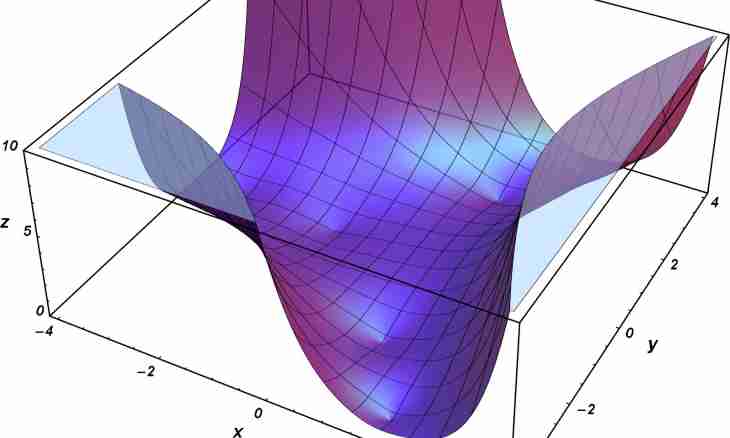Schedules of two functions on the general interval form a certain figure. To calculate its area, it is necessary to integrate the difference of functions. Borders of the general interval can be set initially or be points of crossings of two schedules.
Instruction
1. At creation of schedules of two set functions in the field of their crossing the closed figure limited to these curves and two straight lines x = and and x =b where and and b – the ends of the considered interval is formed. This figure is visually displayed a stroke. Its area can be calculated, having integrated the difference of functions.
2. The function located above on graphics is bigger size, therefore, in a formula its expression will stand the first: S = ∫f1 – ∫f2, where f1> f2 on an interval [and, b]. However, having taken into account that the quantity characteristic of any geometrical object is size positive, it is possible to calculate the area of the figure limited to function graphs on the module: S = | ∫f1 – ∫f2 |.
3. Such option especially is convenient if there is no opportunity or time for creation of the schedule. At calculation certainof integral use Newton-Leibniz's rule which assumes substitution in the end result of extreme values of an interval. Then the area of a figure is equal to the difference of two values of the antiderivative found at an integration stage from bigger F(b) and smaller F (a).
4. Sometimes the closed figure on the set interval is formed by full crossing of function graphs, i.e. the ends of an interval are the points belonging to both curves. For example: find points of intersection of lines at = x / 2 + 5 and at = 3 • x – x²/4 + 3 also calculate the area.
5. Decision. To find points of intersection, work out the equation: x / 2 + 5 = 3 • x – x²/4 + 3 → x² – 10 • x + 8 = 0D = 100 - 64 = 36 → h1.2 = (10 ± 6)/2.
6. So, you found the ends of an interval of integration [2; 8] :S = | ∫ (3 • x – x²/4 + 3 – x / 2 - 5) dx | = | (5 · x²/4 – x³/12 - 2·x) | ≈ 59.
7. Review other example: u1 = √ (4 • x + 5); u2 = x also the equation of a straight line x = 3 is given. In this task only one end of an interval x =3 is given. It means that the second value is required to be found from the schedule. Build the lines set by functions u1 and u2. It is obvious that the value x =3 is the top restriction, therefore, it is necessary to define the lower limit. For this purpose equate expressions: √ (4 · x + 5) = x ↑²4 • x + 5 = x² → x² – 4 • x – 5 = 0
8. Find equation roots: D = 16 + 20 = 36 → h1 = 5; h2 =-1. Look at the schedule, the lower value of an interval is-1. As u1 it is located above u2: S = ∫ (√ (4 • x + 5) - x) dx on an interval [-1; 3]. S = (1/3 • √ ((4 • x + 5)³) – x²/2) = 19.

